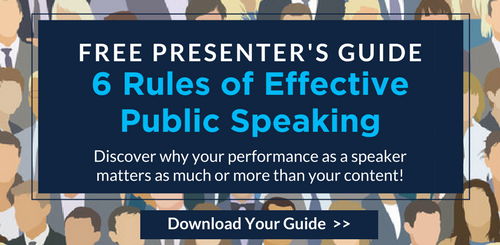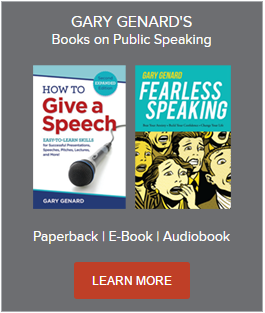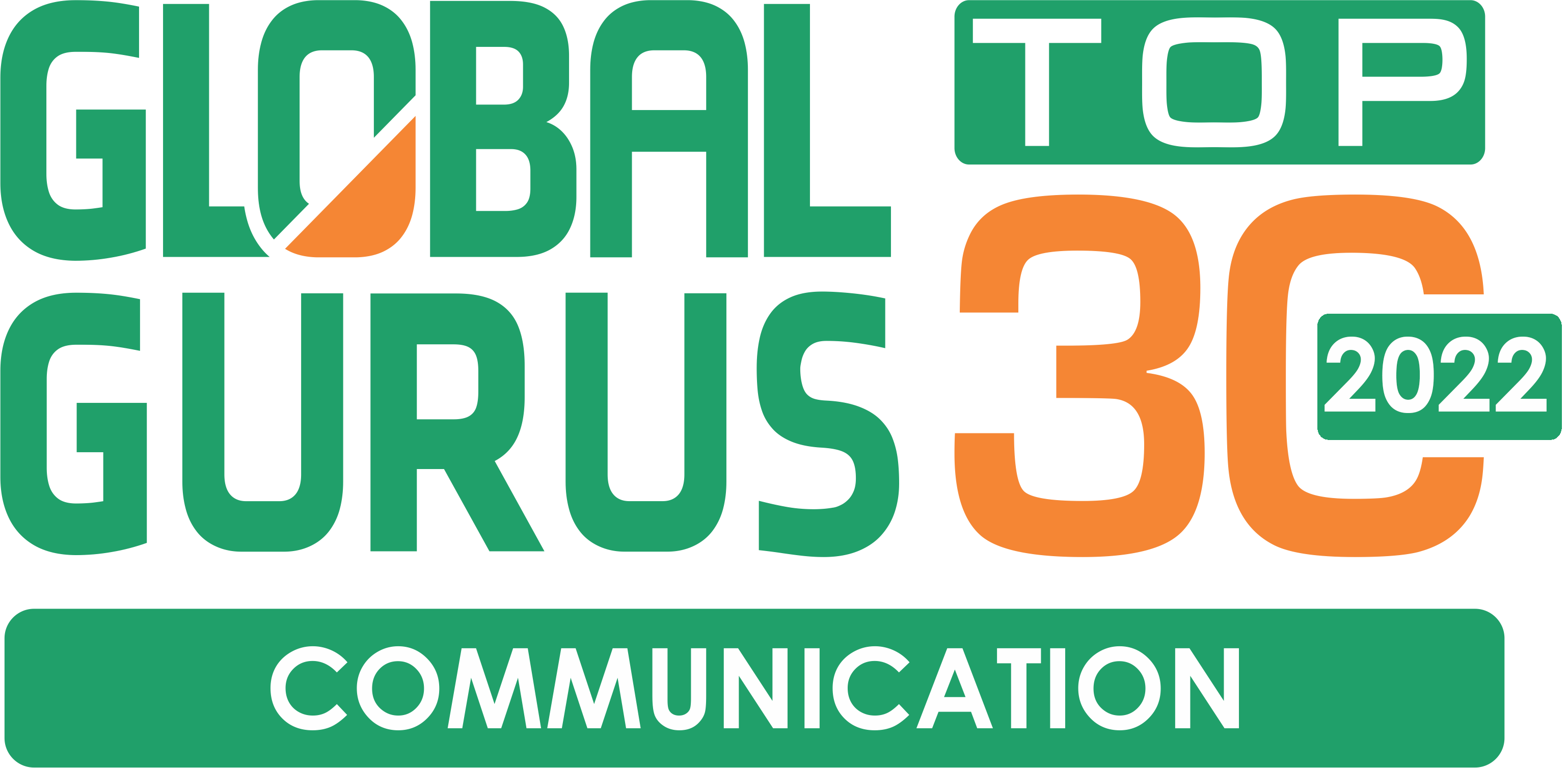- College Essay
- Argumentative Essay
- Expository Essay
- Narrative Essay
- Descriptive Essay
- Scholarship Essay
- Admission Essay
- Reflective Essay
- Nursing Essay
- Economics Essay
Assignments
- Term Papers
- Research Papers
- Case Studies
- Dissertation
- Presentation
- Editing Help
- Cheap Essay Writing
- How to Order
Speech Writing
Introduction Speech

Introduction Speech- Tips & Examples
10 min read

People also read
The 10 Key Steps for Perfect Speech Writing
Understanding Speech Format - Simple Steps for Outlining
How to Start A Speech - 13 Interesting Ideas & Examples
20+ Outstanding Speech Examples for Your Help
Common Types of Speeches that Every Speechwriter Should Know
Good Impromptu Speech Topics for Students
Entertaining Speech Topics for Your Next Debate
Understanding Special Occasion Speech: Types, Steps, Examples and Tips
How to Write A Good Acceptance Speech?
Writing A Presentation Speech In English: Tips And Examples
Commemorative Speech - Writing Guide, Outline & Examples
Farewell Speech | Writing Tips & Examples
How to Write an Extemporaneous Speech? A Step-by-Step Guide
A Graduation Speech Writing Guide with Examples
Introduction speeches are all around us. Whenever we meet a new group of people in formal settings, we have to introduce ourselves. That’s what an introduction speech is all about.
When you're facing a formal audience, your ability to deliver a compelling introductory speech can make a lot of difference. With the correct approach, you can build credibility and connections.
In this blog, we'll take you through the steps to craft an impactful introduction speech. You’ll also get examples and valuable tips to ensure you leave a lasting impression.
So, let's dive in!
- 1. What is an Introduction Speech?
- 2. How to Write an Introduction Speech?
- 3. Introduction Speech Outline
- 4. Introduction Speech Example
- 5. Introduction Speech Ideas
- 6. 7 Tips for Delivering the Best Introduction Speech
What is an Introduction Speech?
An introduction speech, or introductory address, is a brief presentation at the beginning of an event or public speaking engagement. Its primary purpose is to establish a connection with the audience and to introduce yourself or the main speaker.
This type of speech is commonly used in a variety of situations, including:
- Public Speaking: When you step onto a stage to address a large crowd, you start with an introduction to establish your presence and engage the audience.
- Networking Events: When meeting new people in professional or social settings, an effective introduction speech can help you make a memorable first impression.
- Formal Gatherings: From weddings to conferences, introductions set the tone for the event and create a warm and welcoming atmosphere.
In other words, an introduction speech is simply a way to introduce yourself to a crowd of people.
How to Write an Introduction Speech?
Before you can just go and deliver your speech, you need to prepare for it. Writing a speech helps you organize your ideas and prepare your speech effectively.
Here is how to introduce yourself in a speech.
- Know Your Audience
Understanding your audience is crucial. Consider their interests, backgrounds, and expectations to tailor your introduction accordingly.
For instance, the audience members could be your colleagues, new classmates, or various guests depending on the occasion. Understanding your audience will help you decide what they are expecting from you as a speaker.
- Opening the Speech with a Hook
The best speech introduction starts with a hook or opening line that grabs your audience's attention. This could be a surprising fact, a relevant quote, or a thought-provoking question about yourself or the occasion.
- Introduce Yourself
Introduce yourself to the audience. State your name, occupation, or other details relevant to the occasion. You should have mentioned the reason for your speech clearly. It will build your credibility and give the readers reasons to stay with you and read your speech.
- Keep It Concise
So how long is an introduction speech?
Introduction speeches should be brief and to the point. Aim for around 1-2 minutes in most cases. Avoid overloading the introduction with excessive details.
- Highlight Key Points
Mention the most important information that establishes the speaker's credibility or your own qualifications. Write down any relevant achievements, expertise, or credentials to include in your speech. Encourage the audience to connect with you using relatable anecdotes or common interests.
- Rehearse and Edit
Practice your introduction speech to ensure it flows smoothly and stays within the time frame. Edit out any unnecessary information, ensuring it's concise and impactful.
- Tailor for the Occasion
Adjust the tone and content of your introduction speech to match the formality and purpose of the event. What works for a business conference may not be suitable for a casual gathering.
Introduction Speech Outline
To assist you in creating a structured and effective introduction speech, here's a simple speech format that you can follow:
Here is an example outline for a self-introduction speech.
Outline for Self-Introduction Speech
Introduction Speech Example
So if you are wondering what to say in an introduction speech we have you covered! We have compiled introduction speech examples to help you understand how to put your ideas into practice for different scenarios.
Introduction Speech Writing Sample
Short Introduction Speech Sample
Self Introduction Speech for College Students
Introduction Speech about Yourself
Student Presentation Introduction Speech Script
Teacher Introduction Speech
New Employee Self Introduction Speech
Introduction Speech for Chief Guest
Moreover, here is a video example of a self-introduction speech. Watch it to understand how you should deliver your speech:
Want to read examples for other kinds of speeches? Find the best speeches at our blog about speech examples !
What Are Some Famous Introduction Speeches?
Here are the best introduction speeches for students to get inspired:
- Malala Yousafzai's Nobel Peace Prize Acceptance Speech (2014) : Malala's speech upon receiving the Nobel Peace Prize introduced her advocacy for girls' education and youth empowerment globally.
- Elon Musk's Presentation on SpaceX Interplanetary Transport System (2016) : Elon Musk introduced SpaceX's ambitious plans for interplanetary travel, outlining a vision for the future of space exploration.
- Michelle Obama's Democratic National Convention Speech (2008) : Michelle Obama's speech introduced her as a potential First Lady, sharing personal stories and values that resonated with the audience.
- J.K. Rowling's Harvard Commencement Speech (2008) : Rowling's speech introduced themes of failure, imagination, and resilience, drawing from her personal journey as an author and philanthropist.
Introduction Speech Ideas
So now that you’ve understood what an introduction speech is, you may want to write one of your own. So what should you talk about?
The following are some sample introduction speech topics and ideas that can provide an engaging start to a presentation, meeting, or social gathering.
- Personal Story: Share a brief personal story or experience that has shaped you.
- Professional Background: Highlight your career achievements and expertise.
- Hobby or Passion: Discuss a hobby or passion you're enthusiastic about.
- Volunteer Work: Talk about your involvement in volunteer work or community service.
- Travel Adventures: Share anecdotes from your travel adventures.
- Books or Literature: Provide an introduction related to a favorite book, author, or literary work.
- Achievements and Milestones: Highlight significant achievements and milestones in your life or career.
- Cultural Heritage: Explore your cultural heritage and its influence on your identity.
- Social or Environmental Cause: Discuss your dedication to a particular social or environmental cause.
- Future Aspirations: Share your future goals and aspirations.
You can deliver engaging speeches on all kinds of topics. Here is a list of entertaining speech topics to get inspiration.
7 Tips for Delivering the Best Introduction Speech
Now that you know how to write an effective introduction speech, let's focus on the delivery. The way you present your introduction is just as important as the content itself. Here are some valuable tips to ensure you deliver a better introduction speech:
Tip# 1: Maintain Eye Contact
Make eye contact with the audience to establish a connection. This shows confidence and engages your listeners.
Tip# 2: Use Appropriate Body Language
Your body language should convey confidence and warmth. Stand or sit up straight, use open gestures, and avoid fidgeting.
Tip# 3: Mind Your Pace
Speak at a moderate pace, avoiding rapid speech. A well-paced speech is easier to follow and more engaging.
Tip# 4: Avoid Filler Words
Minimize the use of filler words such as "um," "uh," and "like." They can be distracting and detract from your message.
Tip# 5: Be Enthusiastic
Convey enthusiasm about the topic or the speaker. Your energy can be contagious and inspire the audience's interest.
Tip# 6: Practice, Practice, Practice
Rehearse your speech multiple times. Practice in front of a mirror, record yourself or seek feedback from others.

Tip# 7: Be Mindful of Time
Stay within the allocated time for your introduction. Going too long can make your speech too boring for the audience.
Mistakes to Avoid in an Introduction Speech
When crafting and delivering an introduction speech, it's important to avoid common pitfalls that can reduce its impact. Here are some mistakes to watch out for:
- Rambling On: Avoid making the introduction too long. Keep it short and sweet to set the stage without stealing the spotlight.
- Lack of Preparation: Not preparing enough can lead to awkward pauses or losing your train of thought. Practice your speech to feel more confident.
- Using Jargon or Complex Language: Steer clear of technical jargon or complicated language that might confuse the audience. Keep it simple and clear.
- Being Too Generic: A bland introduction can set a dull tone. Make your speech specific to the event and the speaker to keep it engaging.
- Using Inappropriate Humor: Be careful with humor. Avoid jokes that could offend or alienate the audience.
- Overloading with Background Information: Providing too much background information can overwhelm the audience. Offer just enough to give context without bogging down the introduction.
To Conclude,
An introduction speech is more than just a formality. It's an opportunity to engage, inspire, and connect with your audience in a meaningful way.
With the help of this blog, you're well-equipped to shine in various contexts. So, step onto that stage, speak confidently, and captivate your audience from the very first word.
Moreover, you’re not alone in your journey to becoming a confident introducer. If you ever need assistance, you can place a pay to do my essay request and let the experts help you out.
MyPerfectWords.com offers a custom essay service with experienced professionals who can craft tailored introductions, ensuring your speech makes a lasting impact.
Don't hesitate; hire our professional speech writing service to deliver top-quality speeches at your deadline!
Frequently Asked Questions
How long should a speech introduction be.
A speech introduction should be concise, typically lasting about 1 to 2 minutes. It should set the stage, capture the audience's attention, and provide a clear direction for the rest of the speech.
What Is the Best Speech Introduction Greeting?
The best greeting for a speech introduction depends on the formality of the event. Some examples include:
- Formal: "Good morning/afternoon/evening, distinguished guests."
- Semi-formal: "Hello everyone, thank you for being here today."
- Informal: "Hi everyone, thanks for coming."
What Word to Start a Speech?
Starting a speech with an engaging word or phrase can capture the audience's attention. Here are a few speech starting lines:
- "Imagine..." to prompt the audience to visualize something.
- "Today..." to ground the speech in the present moment.
- "Have you ever..." to ask a thought-provoking question.
- "In our lives..." to make a personal connection.
- "Picture this..." to create a vivid mental image.

Write Essay Within 60 Seconds!

Dr. Barbara is a highly experienced writer and author who holds a Ph.D. degree in public health from an Ivy League school. She has worked in the medical field for many years, conducting extensive research on various health topics. Her writing has been featured in several top-tier publications.
Struggling With Your Paper?
Get a custom paper written at
With a FREE Turnitin report, and a 100% money-back guarantee
LIMITED TIME ONLY!
Keep reading

OFFER EXPIRES SOON!

- Theater-Based Techniques
- Dr. Gary Genard
- What Our Clients Say
- Client List
- Dr. Genard in the Media
- Leadership Communication
- Fearless Speaking
- Voice and Speech Improvement
- Presentation Coaching
- Speaking Virtually
- Presentation Skills
- Executive Speech Coaching
- The Benefits of Deep Breathing
- How to Calm Your Nerves Before Speaking
- Leadership Skills: The 5 Essential Speaking Techniques
- 5 Ways to Captivate an Audience
- The Body Language Rules: 12 Ways to be a More Powerful Speaker
- 4 Characteristics of an Influential Speaker
- 6 Skills Building Exercises for Effective Body Language
- 7 Tips for Overcoming Audience Resistance
- 5 Rules for Succeeding with PowerPoint
- Great Speaking? – It's About Performance Over Content!
- 5 Key Tools of Vocal Dynamics
- 5 Secrets of Powerful Body Language
- 10 Ways to Stay Fully Focused when Speaking
- 25 Words or Phrases to Avoid in Speeches and Presentations
- 6 Rules of Effective Public Speaking
- 7 Key Components of Successful Presentations
- 12 Easy Ways to Achieve Presence and Charisma
- 6 Skills Building Exercises Video
Gary Genard's
Speak for success.
"Be a voice not an echo." - Albert Einstein
Your Speech's Introduction: How to Make It Powerful

There's a moment of high drama when you give a speech or presentation—and it occurs before you've even said a word. It's the first few seconds when the "curtain" goes up.
In other words, it's all about anticipation. Your audience at that instant is paying maximum attention . . . they're primed for whatever they're about to experience. Often, these audience members will have no idea of your speaking ability. Oh, they may know they're interested in the topic. But they are almost surely filled with hope that the next half-hour or hour will be interesting and exciting.
Great speakers understand how to engage and move audiences at moments like this. You should too! Learn how in my Free Guide , "Six Rules of Effective Public Speaking."
What happens in the next 60 seconds will help determine whether your speech is successful or not. So here are four key elements you should always include in your speech's introduction. If you want listeners to pay attention, become intrigued, and tell themselves they're in good company, do these four things, in the following order:

1) Grab 'Em from the Moment You Begin Speaking
Consider how most presenters begin. Nearly always, it's along the lines of, "Good afternoon. It's so nice to see you all. Today I'll be talking about . ." followed by a slide with the word "Agenda" and 5 bullet points. If we can't hear you screaming as an audience member, it's probably only because you're too polite to be doing it in public.
These first few seconds are such valuable real estate, it's shocking that speakers don't spend any time working up an inviting treatment. In fact, it's not overstating things to say that if you want to succeed as a speaker, you have to know how to start a speech . There are rhetorical devices ready and waiting for you to use to kick off in a much more interesting way. Here for instance are 12 foolproof ways to open a speech .
It's not good enough to take three or four minutes to settle into your groove. Remember that moment of drama, and how everyone is anticipating what you're about to reveal. You need to burn rubber as soon as your tires hit the road, not spin them unnecessarily in the gravel. It's infinitely easier to keep an audience with you if you engage them from the start.
This is the time your natural talent is on display! To build credibility and earn trust, download my Free e-book , "12 Easy Ways to Achieve Presence and Charisma."

2) Reveal Your Topic (and Make It Sound Interesting)
At this point, without going any further into your speech, reveal your topic.
You may be thinking, "Well, yeah, of course!" Yet haven't you sat through speeches where, five minutes in, you're saying to yourself, "What's the topic here, anyway?" It one of the ways we as speakers may take things for granted, believing that the subject matter is perfectly obvious. (The phrase 'perfectly obvious' should not be part of your public speaking thought process!)
Even if the topic of your speech is emblazoned on posters and flyers beforehand, you lose nothing by reminding the audience about it in your intro. Besides, this is an opportunity to make it sound interesting. You could say, "My topic today is migrating birds of the Northeast." OR you could offer this instead: "Today, you'll be meeting some of the most eccentric characters you could ever run into . . . who just happen to be sitting outside your window right now."
Which talk sounds more interesting?
Just be sure to use language that helps rather than hurts your cause. Learn more in my Free White Paper , "25 Words or Phrases to Avoid in Speeches and Presentations."

3) Tell Them Why They Need to Listen
Here's the most neglected family member of speech introductions—the relative too many speakers kept hidden away in the attic, never to see the light of day. It's the moment you tell everyone why your topic is something they really need to pay attention to.
This is a huge part of engaging audiences and getting them to be present. And as I say, many presenters never even give it a thought. But consider this: every member of your audience is in a "What's-in-it-for-me" frame of mind every time they listen to a speech. They're wondering if this is going to be worth their presence and the effort it took to get here (and the time it's taking them away from their work.)
If you answer those questions in a way that relates to their lives and makes the payoff to them clear, they will pay attention. "I want to talk about this with you today, because it's going to make your life much easier," is a great way, for instance, to address a new procedure that everyone in the department would otherwise be bored to death to hear about. So tell them specifically what's in it for them. Believe me, their ears will perk up.

4) Give Them a Roadmap of Your Journey Together
So let's review. You've hooked your listeners' attention, made your topic sound intriguing, and told them how it's going to improve their lives. You're ready for the final part of your introduction: giving them a roadmap of where you'll be going together.
Call it a blueprint if you like that metaphor. (I prefer roadmap because it presupposes that you will be providing signposts along the way.) Partly, this is a way to make your subject manageable. Whatever that subject is, it's too big to talk about in its entirety. So you have to clue listeners in to the sub-topic areas you'll be addressing in this speech. It may sound something like this:
"I'll be talking about three specific elements of [reaching this goal, gaining this proficiency, understanding what you're looking at, etc.]. First, we'll examine [your first main point]. Once we have that information, we'll be able to [discuss your second item]. Finally, we'll add the third ingredient which will [give us a functioning model, repair the breach, head off the problem in the future . . . whatever the particulars are in your talk]." To me, this is already sounding more interesting than: "Here are the five parts of today's agenda for this speech."
As the great salesman Dale Carnegie once advised (and as I wrote about here ): "Tell the audience what you're going to say, say it; then tell them what you've said." To translate that into today's public speaking: Entice them with the journey you'll be going on together, take them there; then remind them of what an enlightening trip it's been.
You should follow me on Twitter here .

Gary Genard is an actor, author, and expert in theater-based public speaking training. His company, Boston-based The Genard Method offers in-person and online training to help executives and teams become extraordinary communicators. In 2020 for the seventh consecutive year, Gary has been ranked by Global Gurus as One of The World's Top 30 Communication Professionals . He is the author of How to Give a Speech . His second book, Fearless Speaking , was recently named as " One of the 100 Best Confidence Books of All Time ." Contact Gary here .
Tags: public speaking training , presentation skills , public speaking , public speaking tips , how to start a speech , video conferencing , sales training , speech introduction , presence , leadership , keynote speaker , online meetings , how to write a speech , motivational speaker , public speaker , leadership training , audiences , keynote speaker training , how to start a presentation , motivational speaker training , sales , online coaching , Zoom , online classes , online learning , online training , speaking tips , zoom meetings , virtual meetings , videoconferencing , video conferences , introduction , how to write an introduction
Subscribe to Email Updates
Subscribe to the blog, follow gary genard.

- Training Techniques
Main Office - Boston
[email protected] 617-993-3410
- Executive Presentation Skills
- Rehearsal & Preparation
- Group Presentation Skills


IMAGES
VIDEO